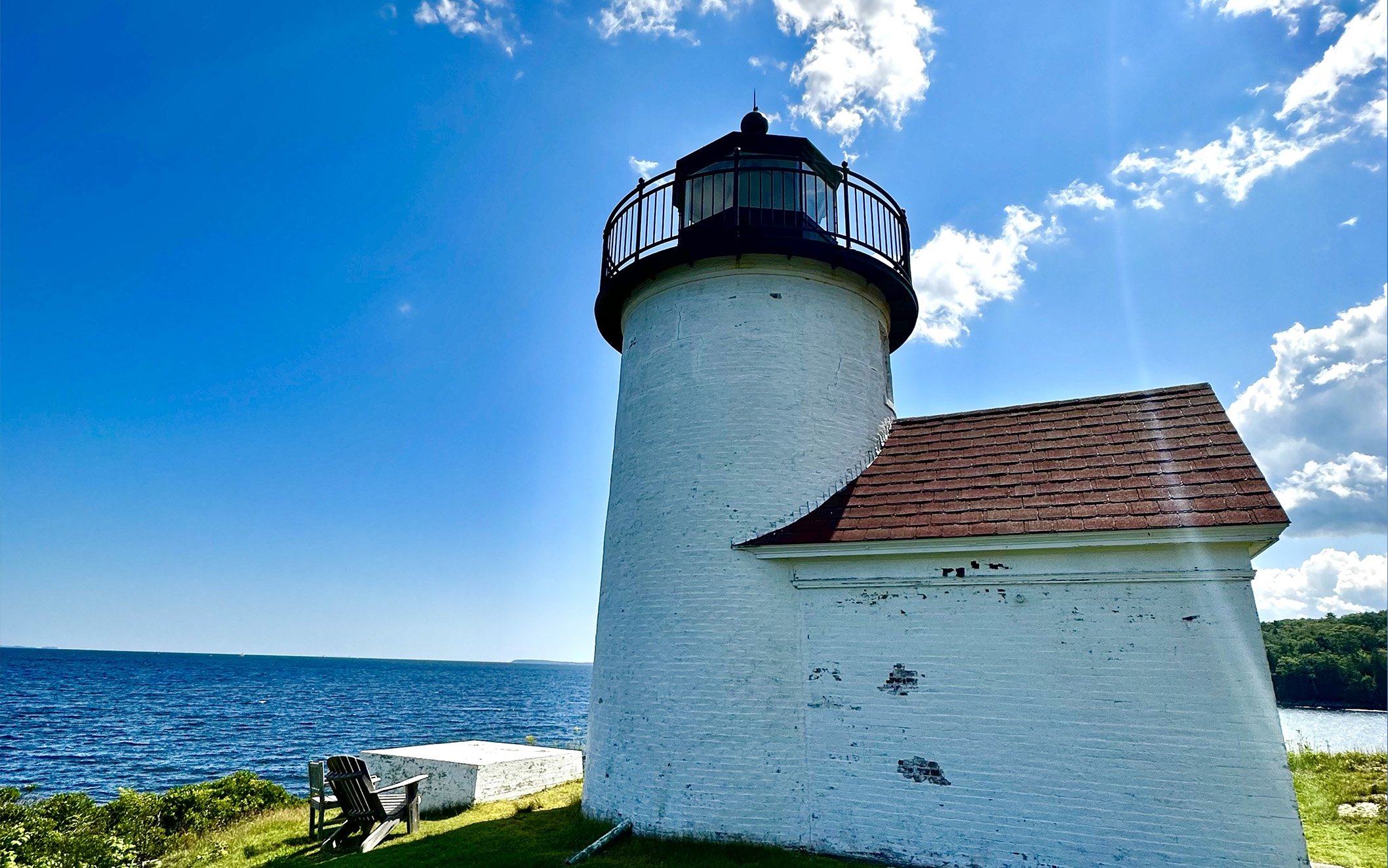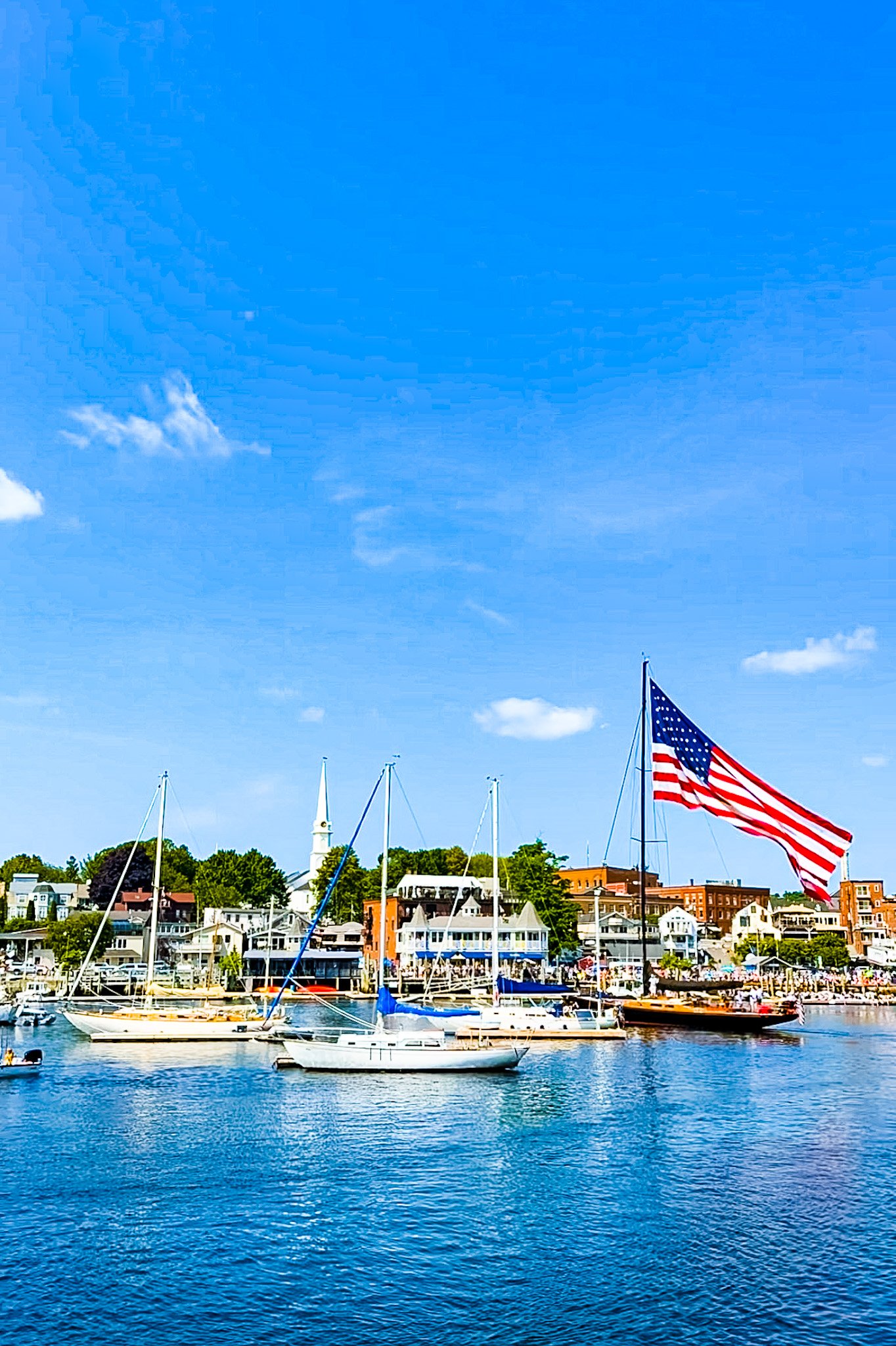
Planning to see some local lights? Here’s a list of those nearest to Camden, along with some bite-sized history.
Curtis Island Light
Camden’s famous beacon of light is none other than the Curtis Island Lighthouse. It’s only accessible by boat, kayak, paddle board, or if you’re brave enough, a short swim.
The best views are from the water, but you can catch a glimpse of it from Bay View Street in downtown Camden. To fully appreciate this light, book a cruise on one of the iconic schooners or rent your choice of personal paddle paraphernalia from Maine Sport!
3-second history lesson
The first brick lighthouse on Curtis Island was built in 1835 by George Galt of Massachusetts, by order of President Andrew Jackson.
Location: Curtis Island, at the mouth of Camden Harbor (+44°12′06″N 69°02′54″W)
It’s light has a range of 6 nautical miles
Owls Head Light
The Owls Head Light stands on top of a steep rise near Rockland Harbor, towering 100 feet above the sea. There’s ample parking which is a short stroll away from this iconic Midcoast light. You can climb the stairway for some great views of Penobscot Bay, and there’s also the Keeper’s Quarters museum. Be sure to check the hours for the museum before you head out!
3-second history lesson
Constructed in 1825, rebuilt in 1852
Location: Owls Head State Park
(+44°05′33″N 69°02′39″W)Fog blasts every 20 seconds
Rockland Breakwater Light
Perched almost a mile out in Penobscot Bay is the Rockland Breakwater Light. The views are fabulous and the walk out is an adventure in itself. Bring an extra layer as the temp drops as you make your to the end of the granite-block walkway. On a clear day, you can see the Owls Head Light toward the right of harbor.
3-second history lesson
The breakwater took 20 years to build, with the lighthouse being constructed in 1902
Location: The breakwater extends south from Jameson Point, marking the northern point of the harbor mouth (+44°06′14″N, 69°04′41″W)
700,000 tons of local granite was used in the construction of the breakwater, which was built by the Army Corps of Engineers
Pemaquid Point Light
One of Maine’s most photographed lighthouses, the Pemaquid Point Light is also famous for being featured on US currency via the Maine quarter. It is located in a park, open to the public, and boasts a learning center, art gallery, public restrooms, and fisherman’s museum. Entrance to the park is $4/adults and children over 12, $1/children 5-11. Kids 4 and under are free. For a suggested donation of $1, visitors can enter and climb the lighthouse tower for a bird’s eye view of Muscongus Bay. The rock formations around the light are some of Maine’s oldest, so be sure to explore them while you’re there.
3-second history lesson
Commissioned by President John Quincy Adams and built in 1827
Location: Pemaquid Point, entrance to Muscongus Bay (+43°50′13.03″N 69°30′21.77″W)
One of only six Fresnel lenses still in service in Maine
Grindle Point Light
Grindle Point Light was established in 1851 on the offshore island of Islesboro. The light guides mariners into Gilkey Harbor. The station features a square brick tower, a museum and gift shop - open July 1st through Labor Day. You can take a ferry from Lincolnville to visit this charming little lighthouse, which is located right at the landing.
3-second history lesson
Built in 1851, replaced in 1874
Location: Entrance to Gilkey Harbor in upper Penobscot Bay (+44°16′56″N, 68°56′34″W)
The Grindle Point Light tower is 32 feet tall and has a unique pyramidal shape


















